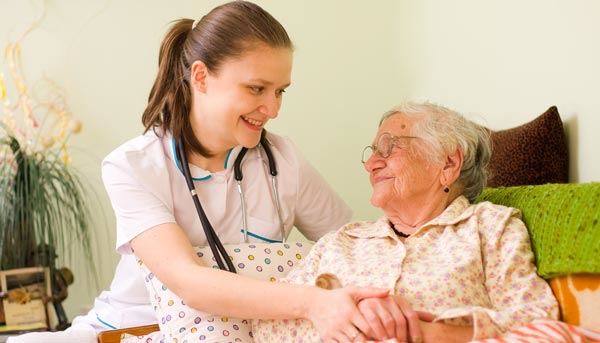
- Staying immobilized in a bed or wheelchair can lead to dangerous pressure sores.
- 2.5 million individuals develop bed sores every year.
- Lesions can occur in as little as two to six hours.
In long-term care facilities, residents who have mobility issues, are paralyzed or are otherwise incapacitated present numerous challenges to long-term care staff. They may require assistance in dressing, bathing and more. Even the very act of staying immobilized in a bed or wheelchair can lead to dangerous pressure sores.
How burdensome are pressure sores?
According to the Agency for Healthcare Research and Quality, a division of the U.S.Department of Health and Human Services, 2.5 million individuals develop bed sores every year. Not only are these lesions painful, they are prone to infection and inflate health care expenses.
The National Pressure Ulcer Advisory Panel lists several risk factors for residents who are prone to these skin problems. These include decreased mental status, incontinence, nutritional deficits and exposure to moisture. In the context of long-term care, staff members need to be mindful of device-related pressure, friction, shearing, immobility and lack of physical activity.
It may not even take long for pressure sores, which are the product of reduced blood flow, to develop. Experts from the New York City Health and Hospitals Corporation assert that lesions can occur in as little as two to six hours.
What strategies come under pressure management?
The NPUAP recommends a protocol for preventing bed sores in the context of long-term care settings. Providers need to assess residents at scheduled intervals: upon admission, once a week for four weeks, then once a quarter, as well as anytime an individual's condition changes.
There are three components to assessment and care. First, when it comes to the skin itself, a head-to-toe assessment must pay special attention to pressure points, which include the back of the head, elbows, sacrum, ischium, trochanters and heels. There need to be regular check-ins for bathing, as well as for hygienic needs in residents who are incontinent. Moisturizers will help protect dry skin, and bony prominences must not be massaged.
Secondly, nutritional assessments will reveal any telling deficiencies that pose a risk and need to be corrected. Additionally, occasions when a resident is turned present opportunities to offer a glass of water to prevent dehydration.
Finally, Mechanical loading and support surfaces can be pivotal to pressure management. Bedridden residents need to be repositioned every two hours, while those in a wheelchair have to be repositioned every hour. To monitor this, repositioning schedules should be written. Those who are particularly at risk for pressure sores may benefit from cushions and similar products sold by AliMed, all of which help relieve pressure and redistribute weight when appropriate. Additionally, there are lifting devices that help with repositioning, as well as pillows and pads that can help protect bony prominences.
Sources:
- http://www.npuap.org/resources/educational-and-clinical-resources/pressure-ulcer-prevention-points/
- http://www.ahrq.gov/professionals/systems/long-term-care/resources/pressure-ulcers/pressureulcertoolkit/puover.html
- http://www.nyc.gov/html/hhc/infocus/html/nursing/nursinghomeltc_pu.shtml